Book Binding
When all the writing, and painting if any, is completed, the individual book sections are sewn together between permanent wooden boards. In the past the sewing thread was made from animal tendons, typically from the thighs of cattle. Today, it is more common to use synthetic material such as thread picked from woven plastic sacking or cording stripped from the inside of car tyres.
The Ethiopian style of sewing is very different to that now used in the rest of the world. The key feature is the use of independent pairs of link-stitch sewing to join the sections together and attach them directly to the outer wooden boards.
The wood for the cover has to be strong but relatively lightweight. Traditionally olive wood was preferred, but other woods such as acacia, cactus, eucalyptus, fig, or juniper were used. Locally grown wood is increasingly difficult to obtain and many books are now bound in boards purchased from carpenters. These boards are now often made of plywood.
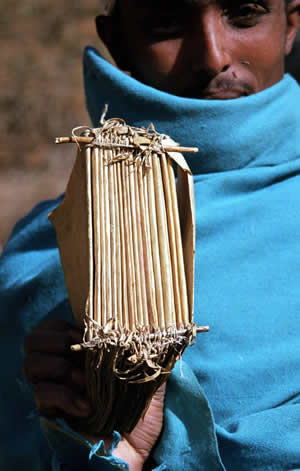 |
Carrying book to binder; sections are held together with twigs Qés Misganew Asaye, Gimb Giyorgis, April 2001 |
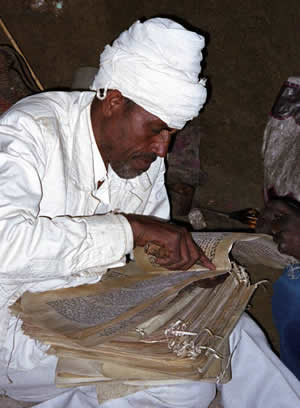 |
Piercing holes through a section of folded sheets prior to sewing Merigita Hulgizé Nuriliign, Zigora Gebriel, November 2000 |
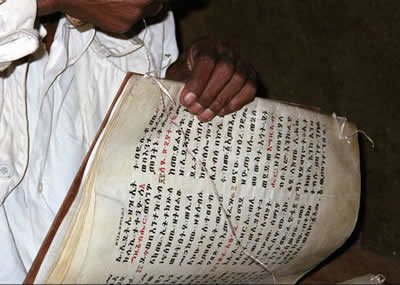 |
Sewing the first section to the wooden board Merigita Hulgizé Nuriliign, Zigora Gebriel, November 2000 |
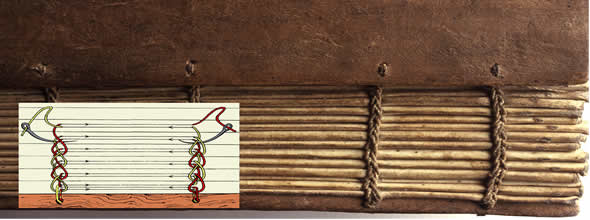 |
Spine of modern book with two pairs of link-stitch sewing. Front board is tilted up to show method of fixing thread to boards. Inset, line drawing showing, on a pair of the link stitches, how one thread and two needles are used to sew the boards to the sections Book acquired 1995 |
Sometimes the book is then bound in cowskin that is bought from the local tanner. The skin is dyed red or reddish-brown before being pasted over the wood. Decorative patterns are often stamped on the leather using heated iron finishing tools. Seven basic designs of tool are commonly found. While all seven tools may be used on a large book, designs using as few as three are common on smaller books.
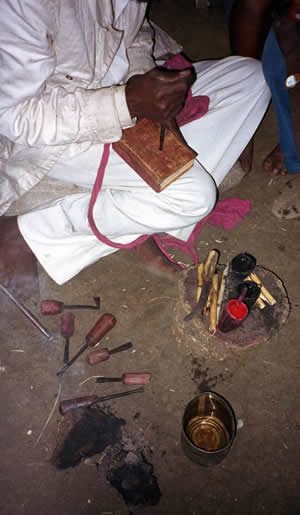 |
Decorating a book cover using a heated tool Merigita Hulgizé Nuriliign, Zigora Gebriel, November 2000 |
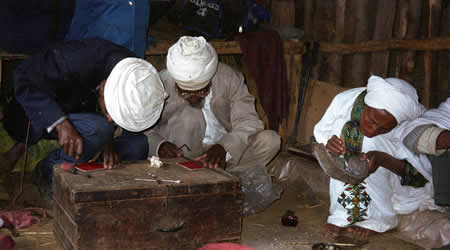 |
Heating the tools and demonstrating tooling on leather samples Mulugita Areaya Gebeyehu and Qeñgita Birhan Hilina, Gelawdiwos, July 2002 |
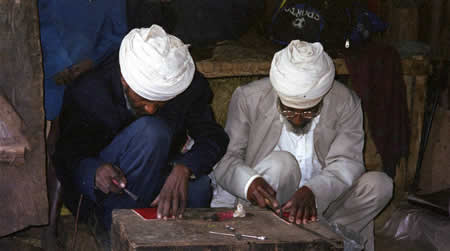 |
Demonstrating tooling on leather samples Mulugita Areaya Gebeyehu and Qeñgita Birhan Hilina, Gelawdiwos, July 2002 |
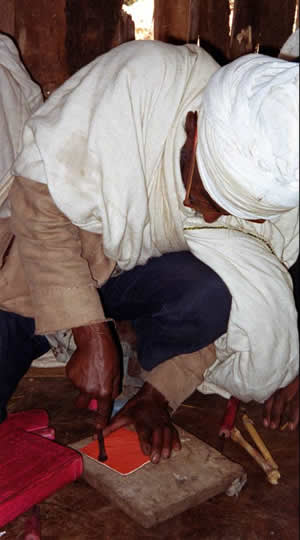 |
Demonstrating tooling on a leather sample Qeñgita Birhan Hilina, Gelawdiwos, July 2002 |
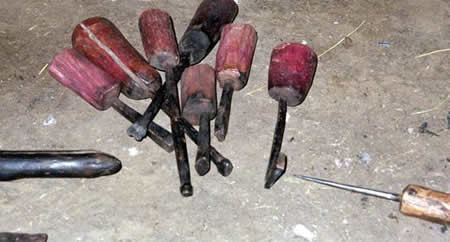 |
Set of seven finishing tools for decorating leather book covers Merigita Hulgizé Nuriliign, Zigora Gebriel, November 2000 |
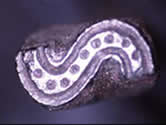 |
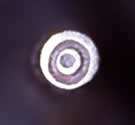 |
Finishing tool patterns - 'Cresent' and 'Doves Eye' Qeñgita Birhan Hilina, Gelawdiwos, July 2002 |
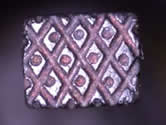 |
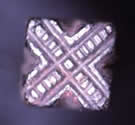 |
Finishing tool patterns - 'Criss-Cross' and 'Cross' Qeñgita Birhan Hilina, Gelawdiwos, July 2002 |
 |
Side view of f inishing tool for marking four parallel lines Qeñgita Birhan Hilina, Gelawdiwos, July 2002 |
 |
 |
The heads of four line and three line tools Qeñgita Birhan Hilina, Gelawdiwos, July 2002 |
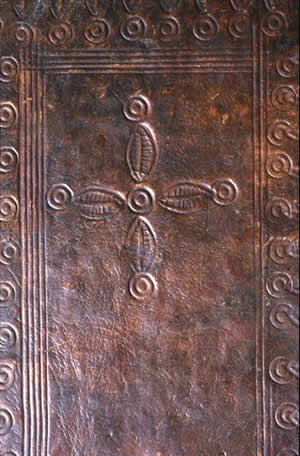 |
Enlarged central motif of a typical book cover showing tooling detail Acquired 1994 |
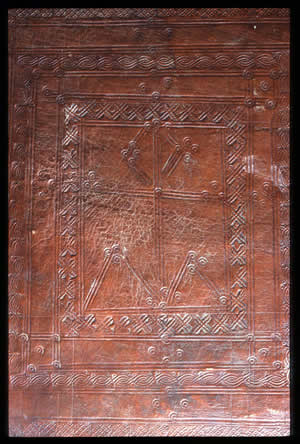 |
Front of the binding of an Ethiopian book Acquired 1993 |